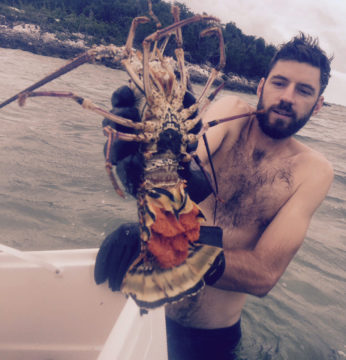(June 5, 2018) With the closure of the spiny lobster season on April 1st, Tropic Seafood is no longer receiving live lobster, and the few that remain in the holding tanks have begun to bear eggs. Therefore, it is time to release these berried females back into the wild so they are able to spawn and contribute to the next generation.

On May 26th the team released 17 berried females off the southwest coast of New Providence, Bahamas, equating to approximately 21 million fertilized eggs. The female lobsters hold the fertilized, bright orange eggs under their tail, which turn brown when they are ready to hatch.
Under the cover of night, they will have dispersed into the many coral heads that dot the area, which will provide safe cover from predators.
A single female lobster can release up to 1.5 million eggs, which will then hatch into tiny, transparent larvae. After 9 months of drifting the ocean currents, and undergoing 11 larval stages, they will settle in nursery habitats such as mangroves, where they can hide within dense mats of algae. Once large enough, the subadults move out into coral reef and hard bottom environments, where they can conceal themselves in cracks and crevices. Out of each clutch of eggs, as few as one lobster may survive to adulthood.
Tropic Seafood recognizes the importance of a sustainable lobster fishery, so that it may continue to benefit Bahamian fishers and support the wider economy.

